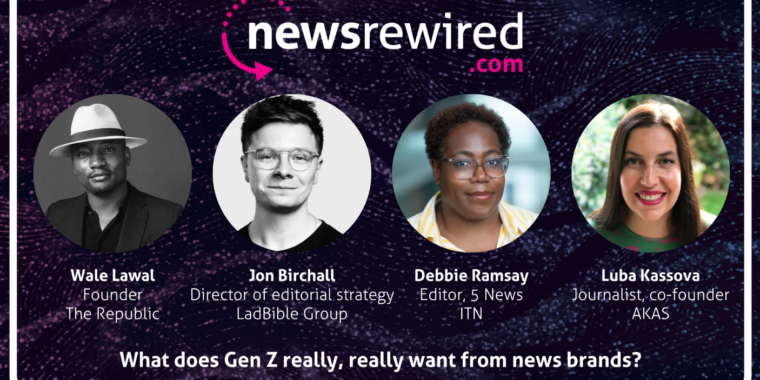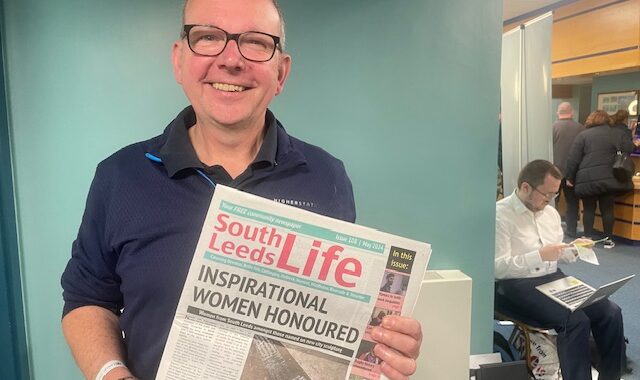By John Baron
There is more to winning over young audiences than making TikTok videos. While that helps when done right, news outlets n need to focus on developing the right products and direct relationships with the under-26s – just like the tech companies and social platforms who figured that out long ago.
Besides that, young people also tend to have an issue with the lack of action and agency that comes from consuming the news. In a big political year in the UK and around the world, how can news content motivate young people to head to the polls armed with the right information?
Panellists at News Rewired, which was being held at News International in London last week, included Wale Lawal (The Republic in Africa), Jon Birchall (LadBible), Debbie Ramsay (ITN) and Luba Kassova (AKAS).
Luba Kassova, AKAS, set out the issue affecting all publishers: “There is a collapse in interest [in the news amongst Gen Z].”
And the panel agreed on one major thing – simple language and socially native content were both key to re-engaging younger people.
Lawal, from The Republic, said 60 per cent of his audience were aged 18-35 and election coverage was aimed principally at first-time voters. He offered three takeaways:
1. Start early before campaigning starts. Who in the audience does not understand the election?
2. What do these people need to know? Republic focusses on first-time voters. They may not know about the election but they care about issues and rights. Many young people care passionately about universal issues and your coverage needs to focus on this.
3. Serialise content – looking at different issues each time and then wrap it up in a podcast.
Debbie Ramsay (ITN) pointed to similarities between over 45 audience and younger people. Ch5 News’s average viewer age is 61 ‘but we tell stories similar ways – focusing on issues and people rather than politicians and Westminster bubble’.She encouraged publishers to think: What does this mean to me and why does it matter? Cost of living, immigration – let people hear all the views and make up their own minds – don’t tell them what to think!
Lad Bible deals with politics with a ‘small p rather than big P’. Again, they are looking at social issues told in a simple, easy to understand way, rather than politics.
Debbie from ITN said ‘positive’ news is a big deal for gen Z, relentless bad news had caused people to switch off, but through a positive news approach they had been bringing politics to people without them realising.Lawal, from The Republic, said his younger readers want to know about what is working, what can they do to help? Highlighting how can we come together to make a difference, was important to Gen Z readers – it’s important to highlight challenges and the possible solutions.
He also pointed out that representation matters. He added: “We have an editorial column dedicated to female audiences – it is important they see themselves in the sort of stories we cover. It has bought us a number of writers and having a dedicated column means there’s always an opening for issues women face to be discussed.”
Humanising issues to make them relatable was incredibly important to younger people, the panel concluded.
LadBible highlighted a similar humanising approach, pointing to a story about refugees explaining why they never wanted to leave Syria after conflict began, which was counter to certain media coverage. First person pieces to help a young audience understand the story were key.Jon Birchall, LadBible group, added: “[Gen Z] is the first generation who grew up with these social platforms. They want a certain type of news that will fit them. For us, TikTok is a huge growth area.
“News brands need to talk more about how issues affect Gen Z, especially as topics such as the cost of living crisis are targeted towards families rather than Gen Z, even though this generation is filled with first-time buyers and renters.”
So what is it that Gen Z really, really wants from news brands?
- Younger audiences want to trust their news
- Storytelling needs to be engaging and easily accessible
- News brands need to use simple language, which younger generations can relate to
- People stories to explain issues to them.




